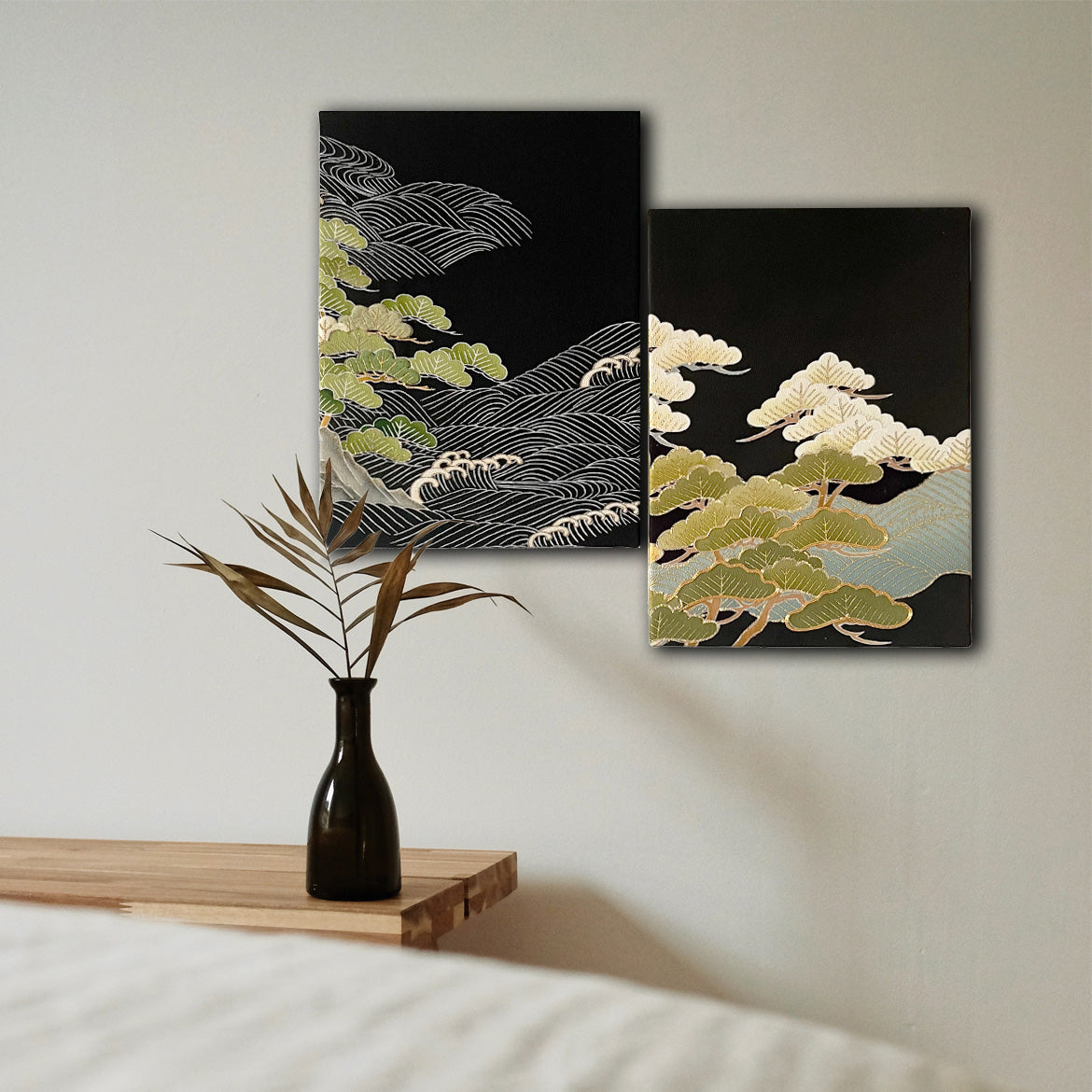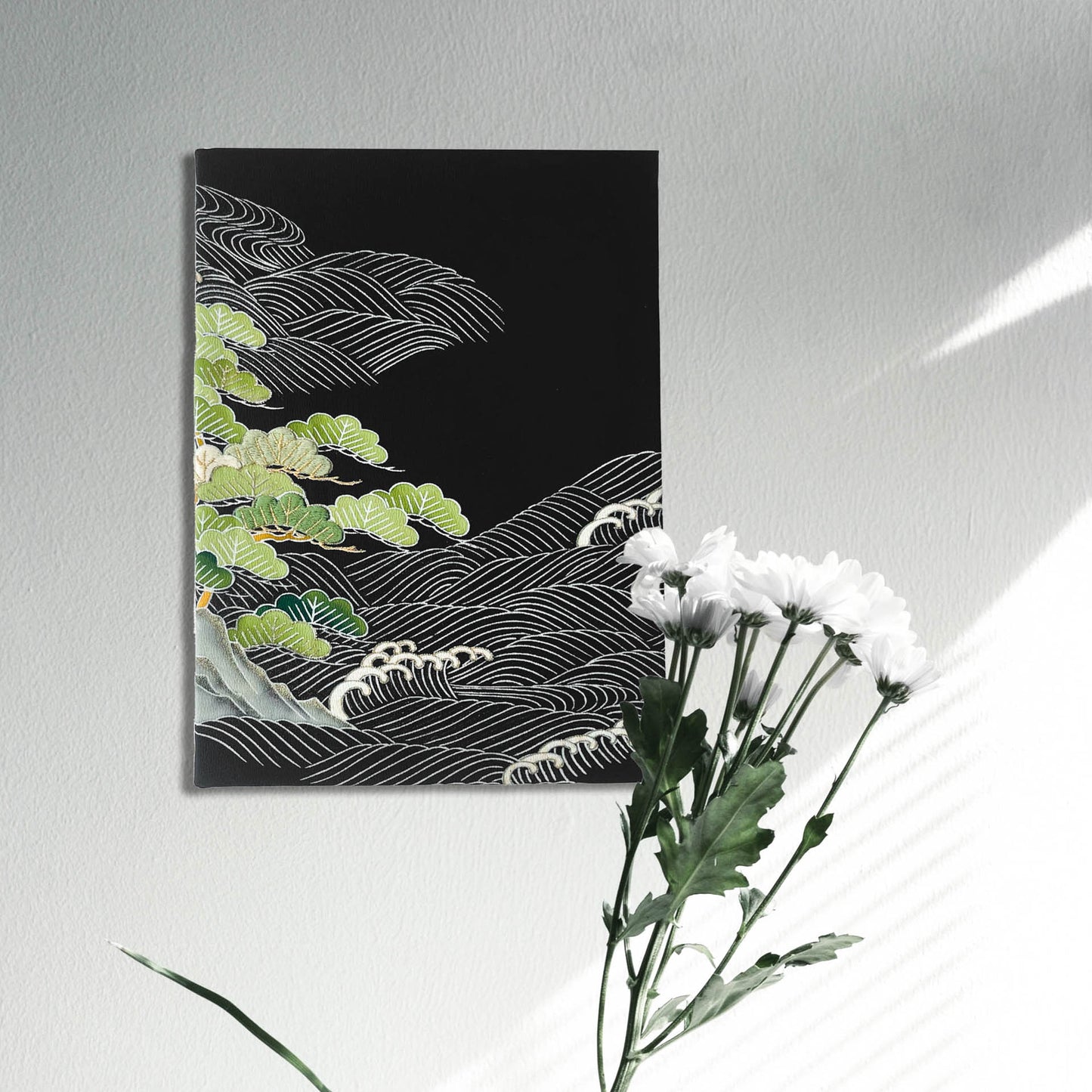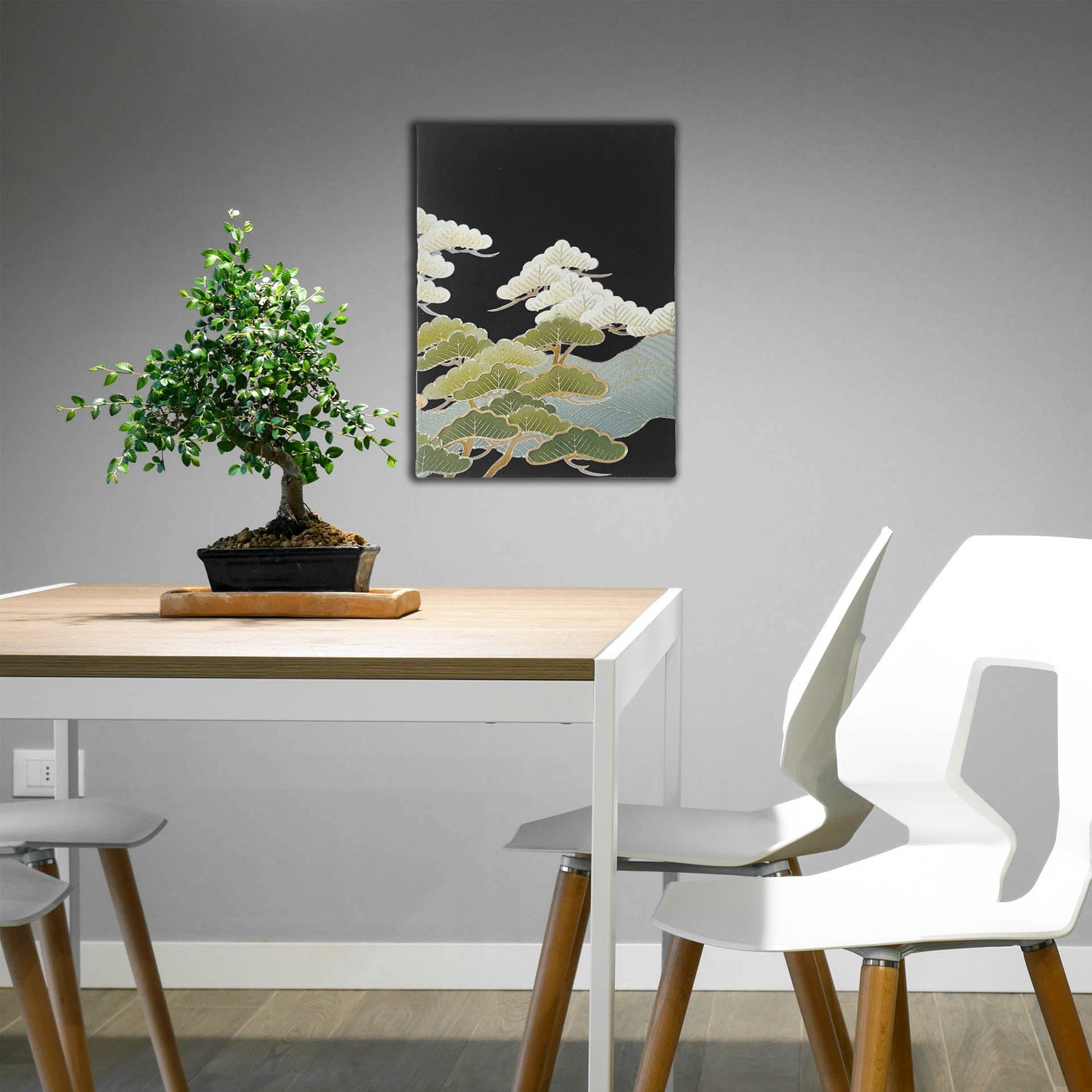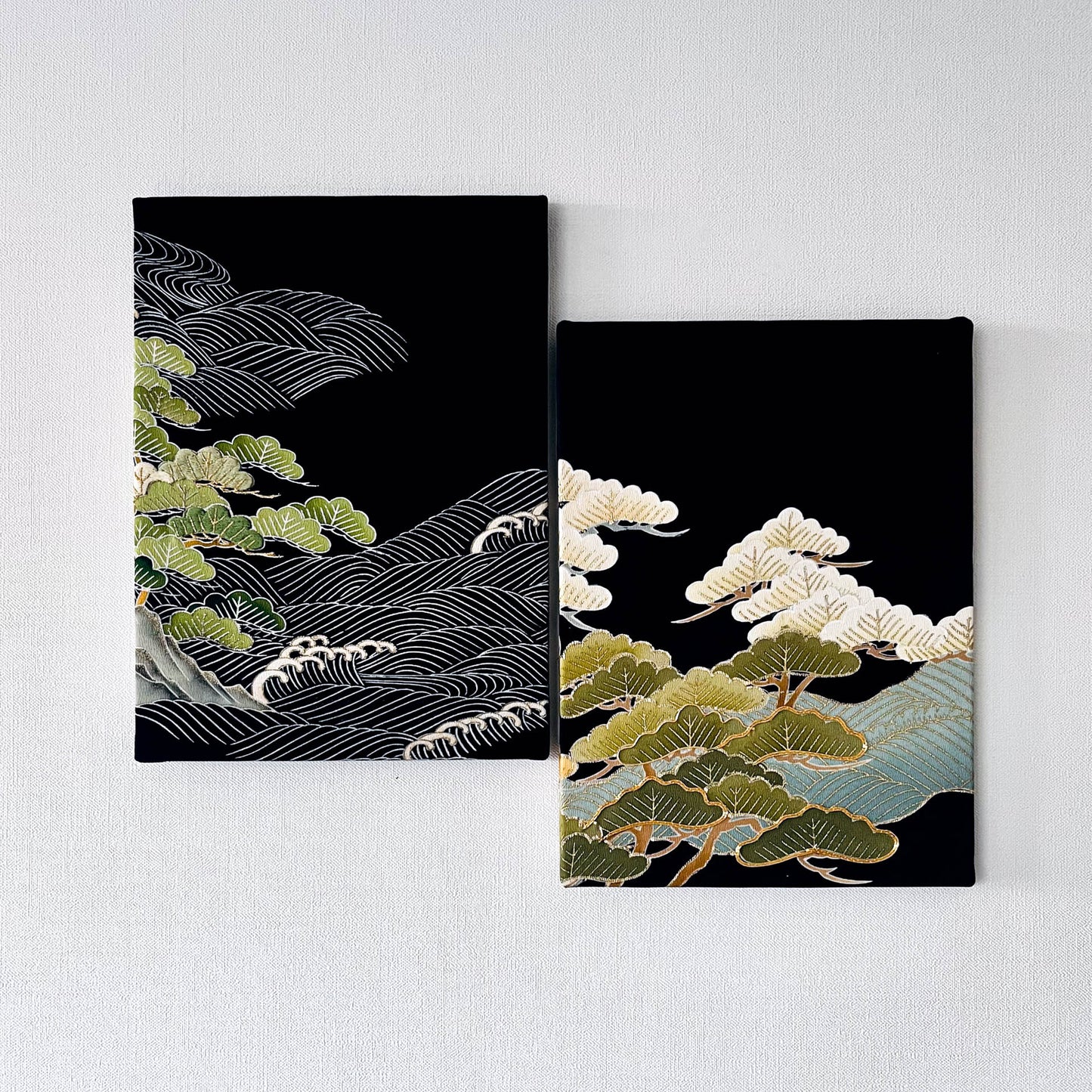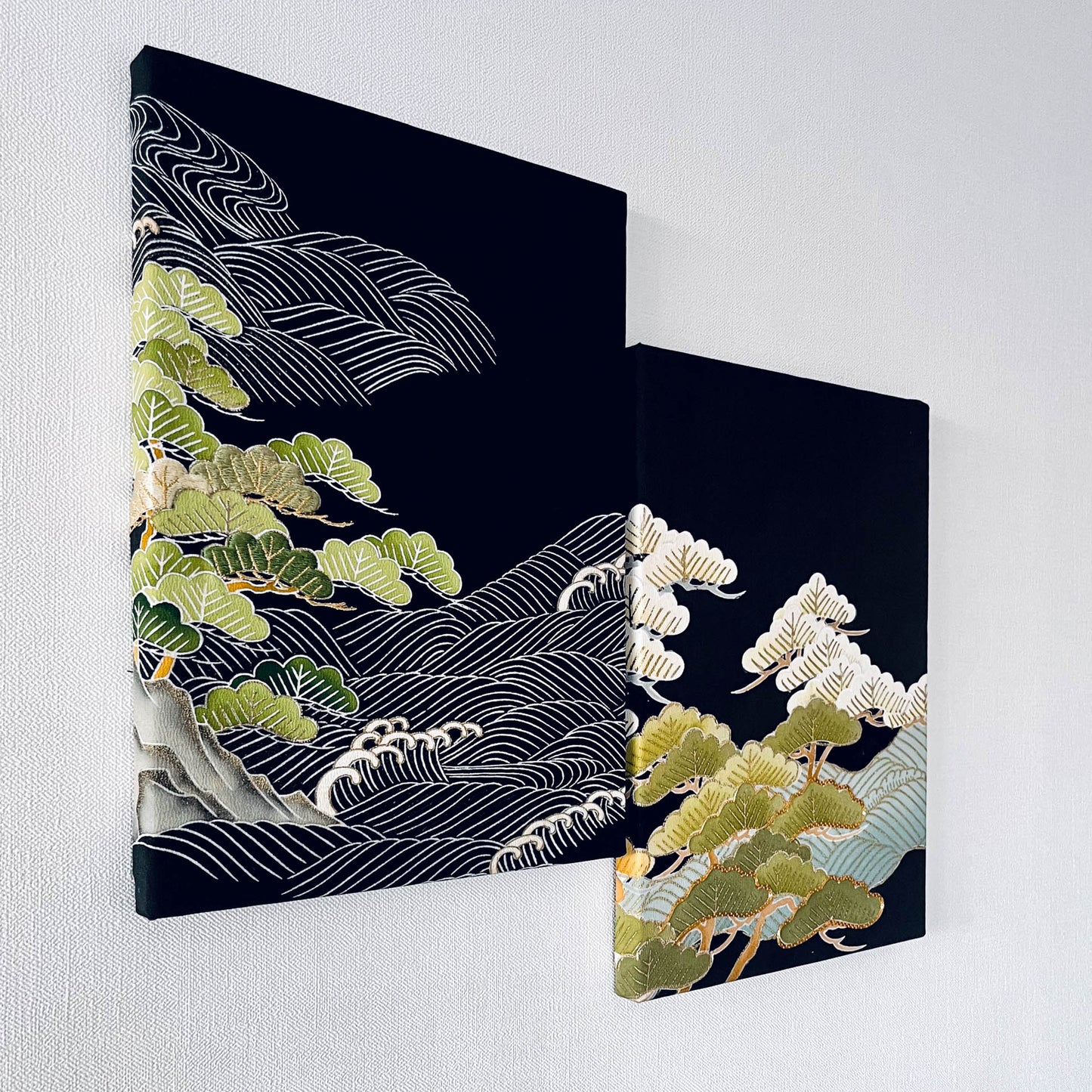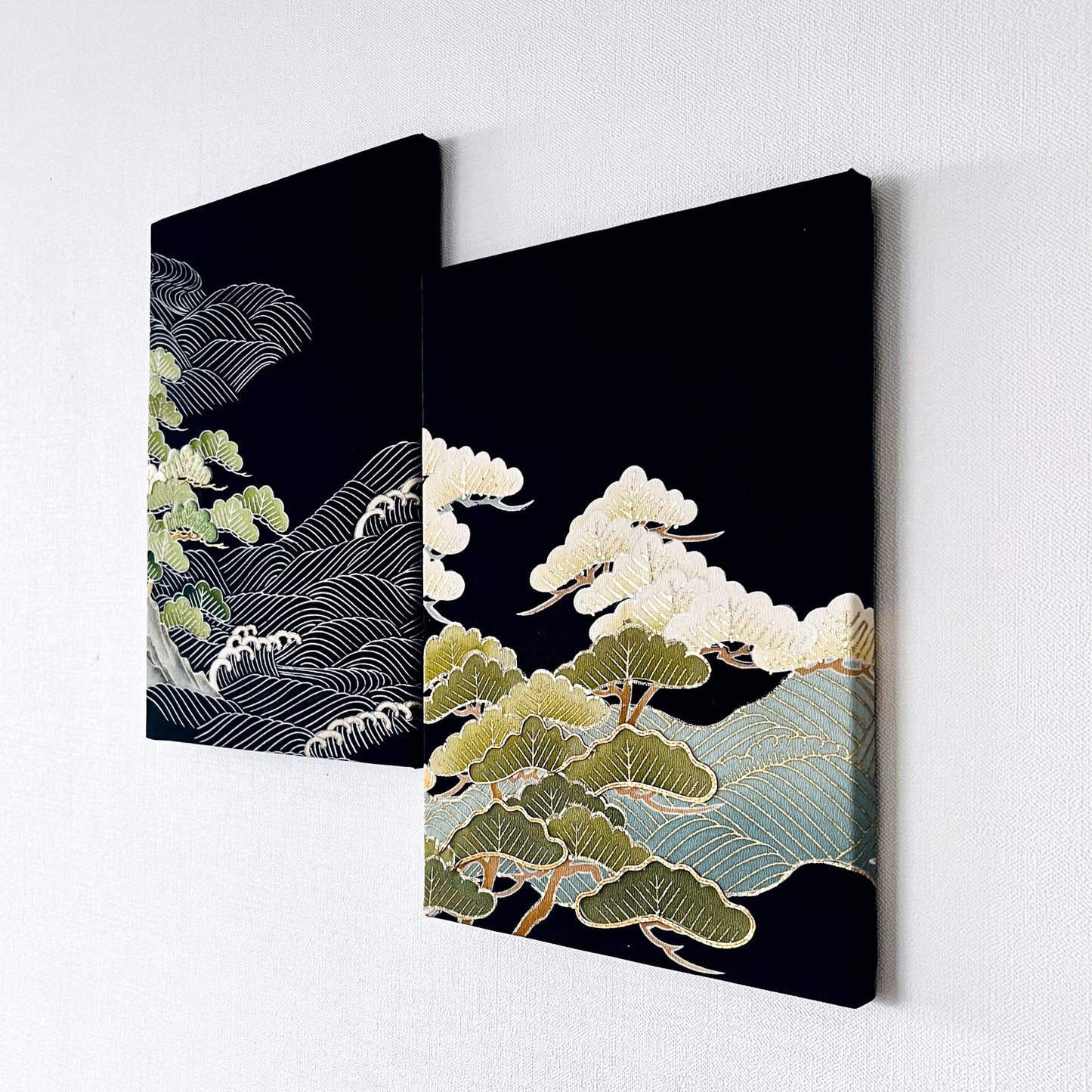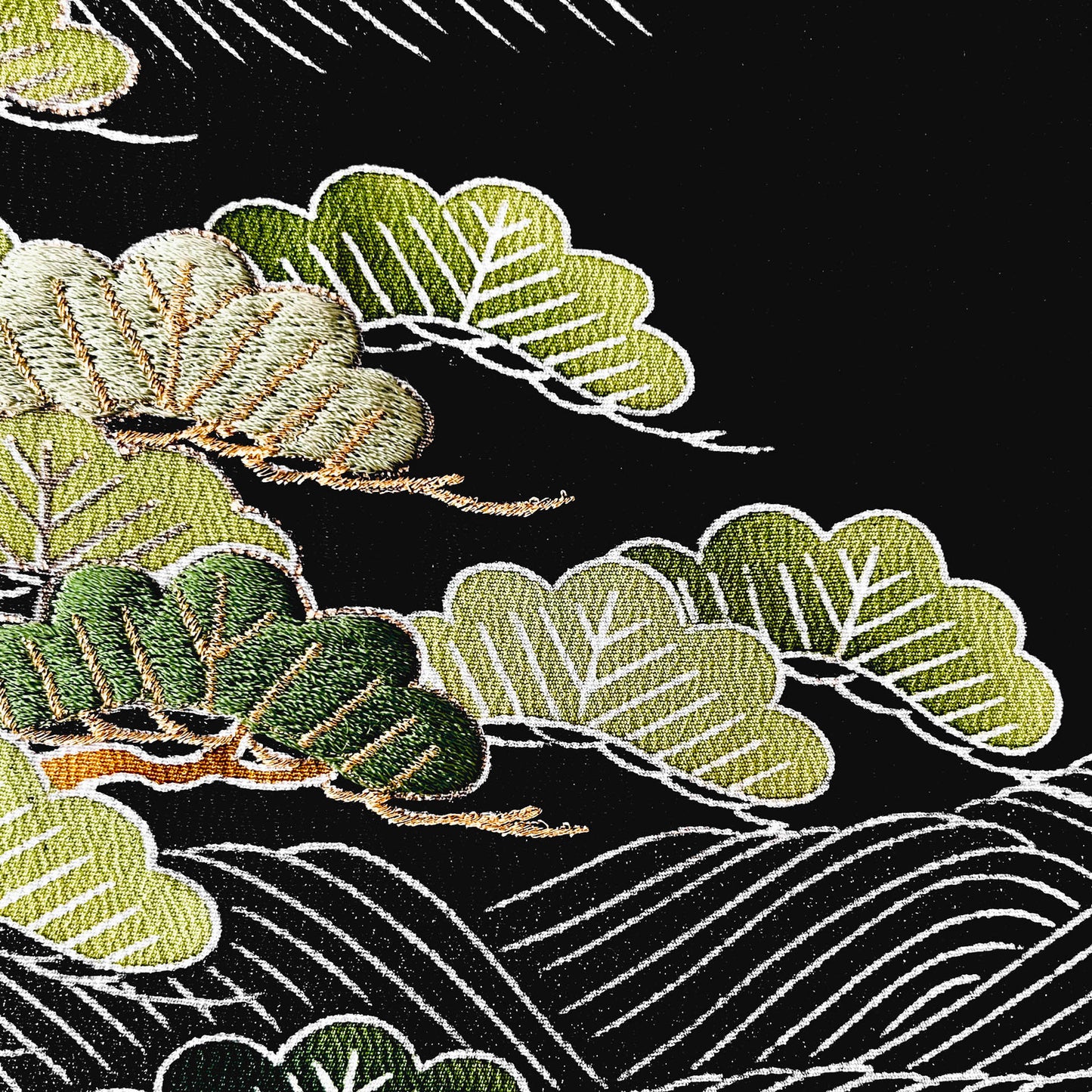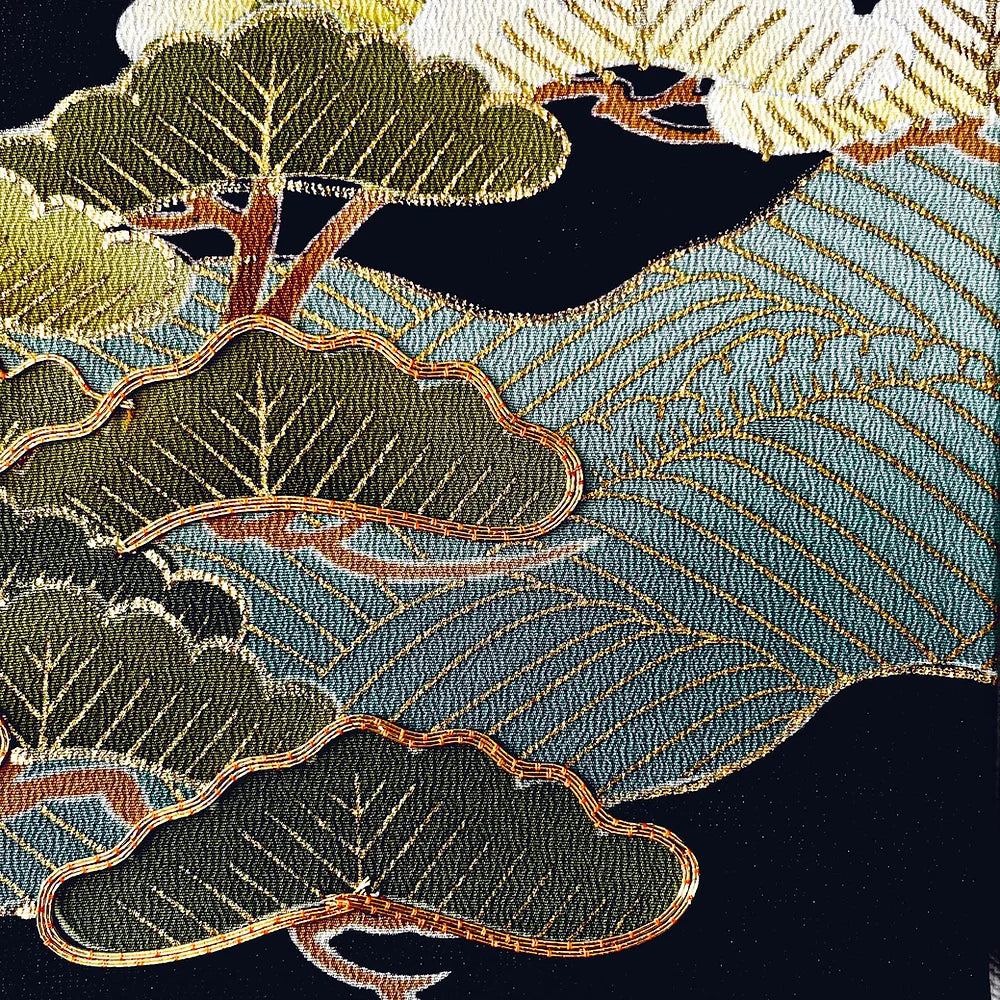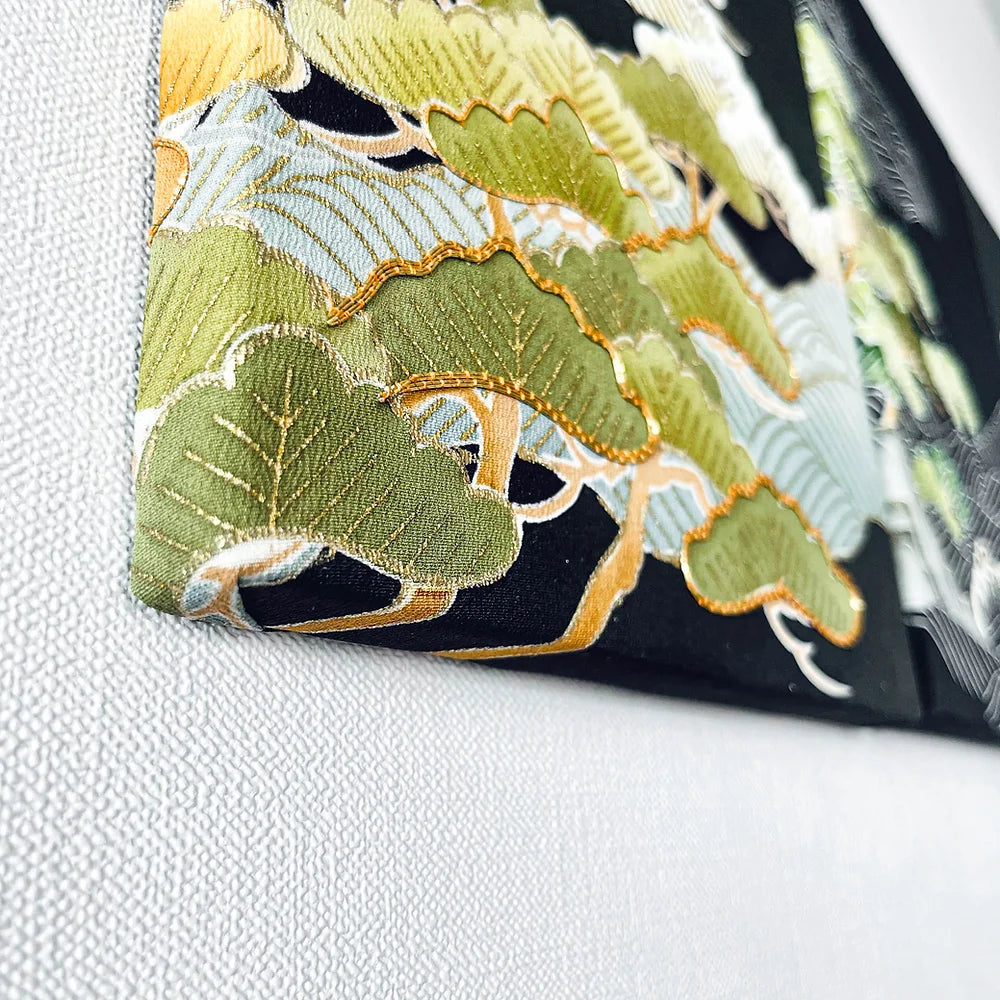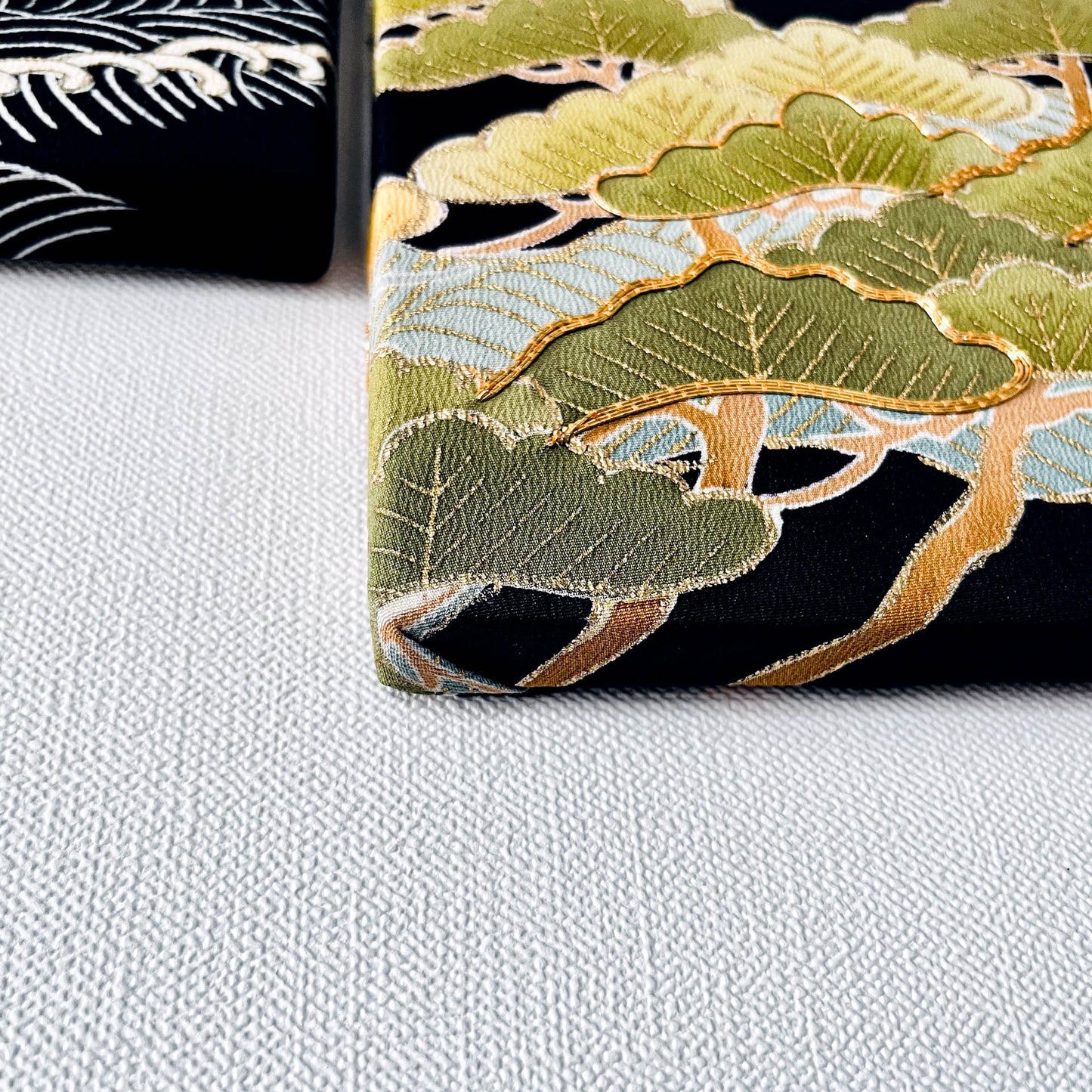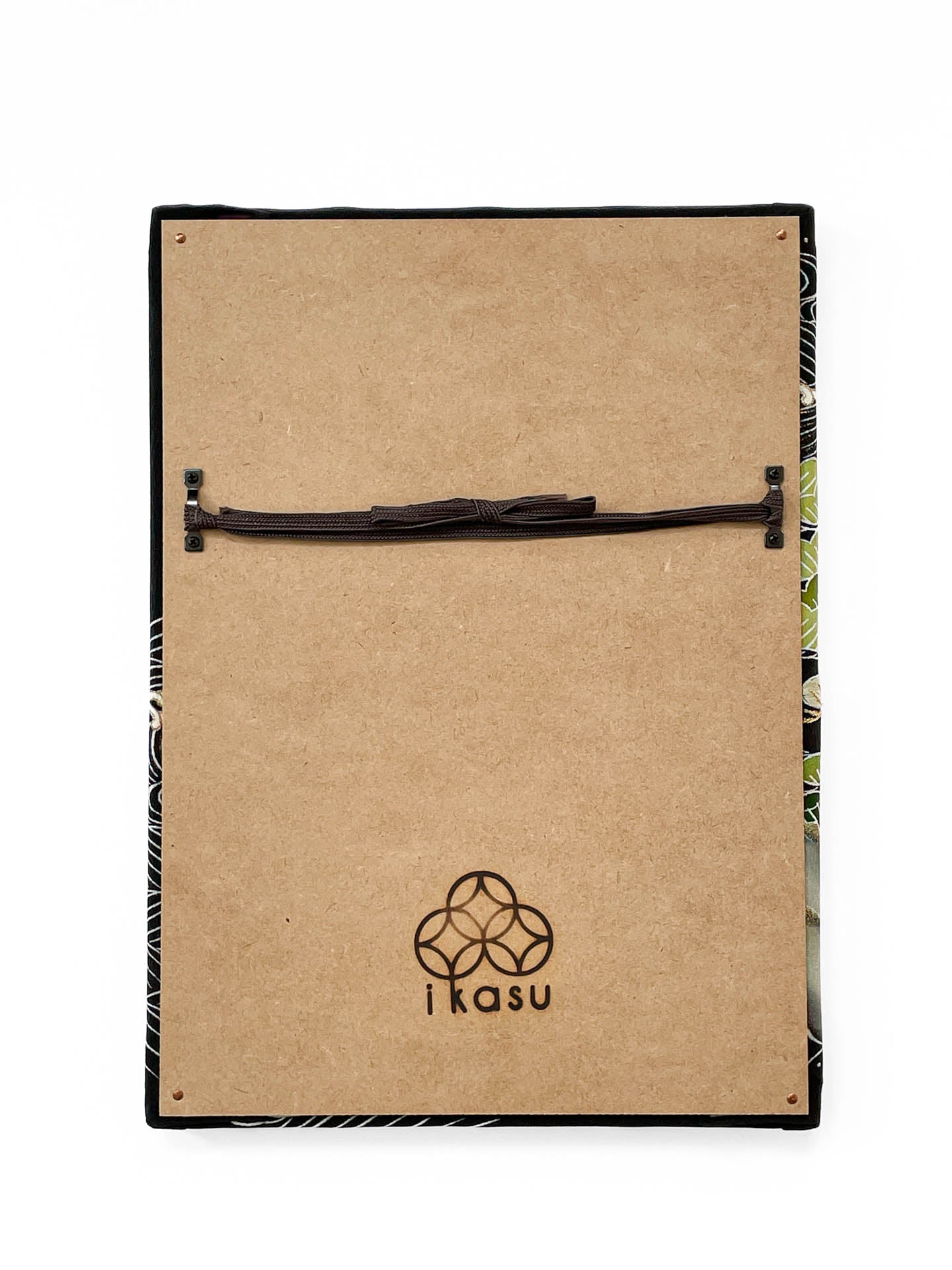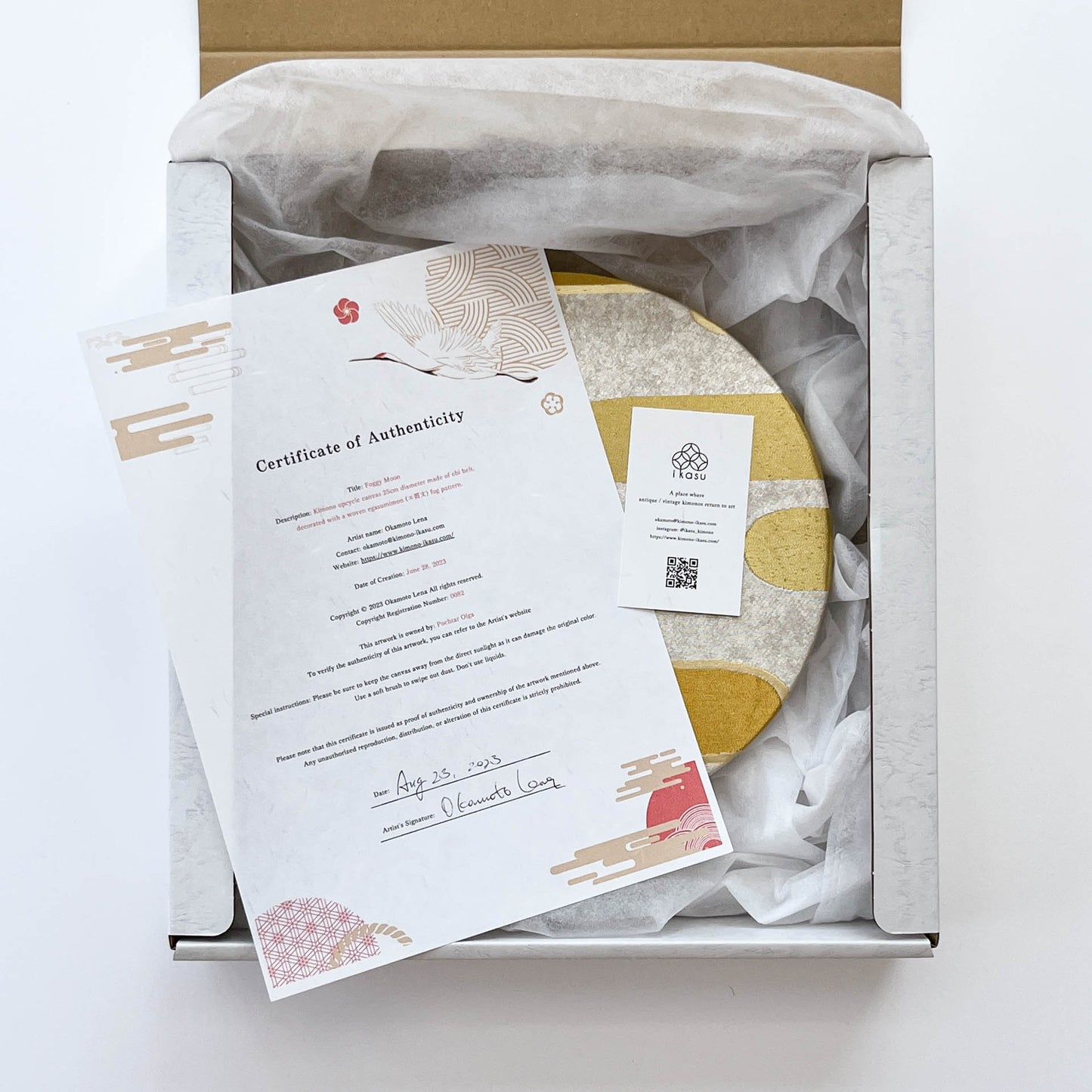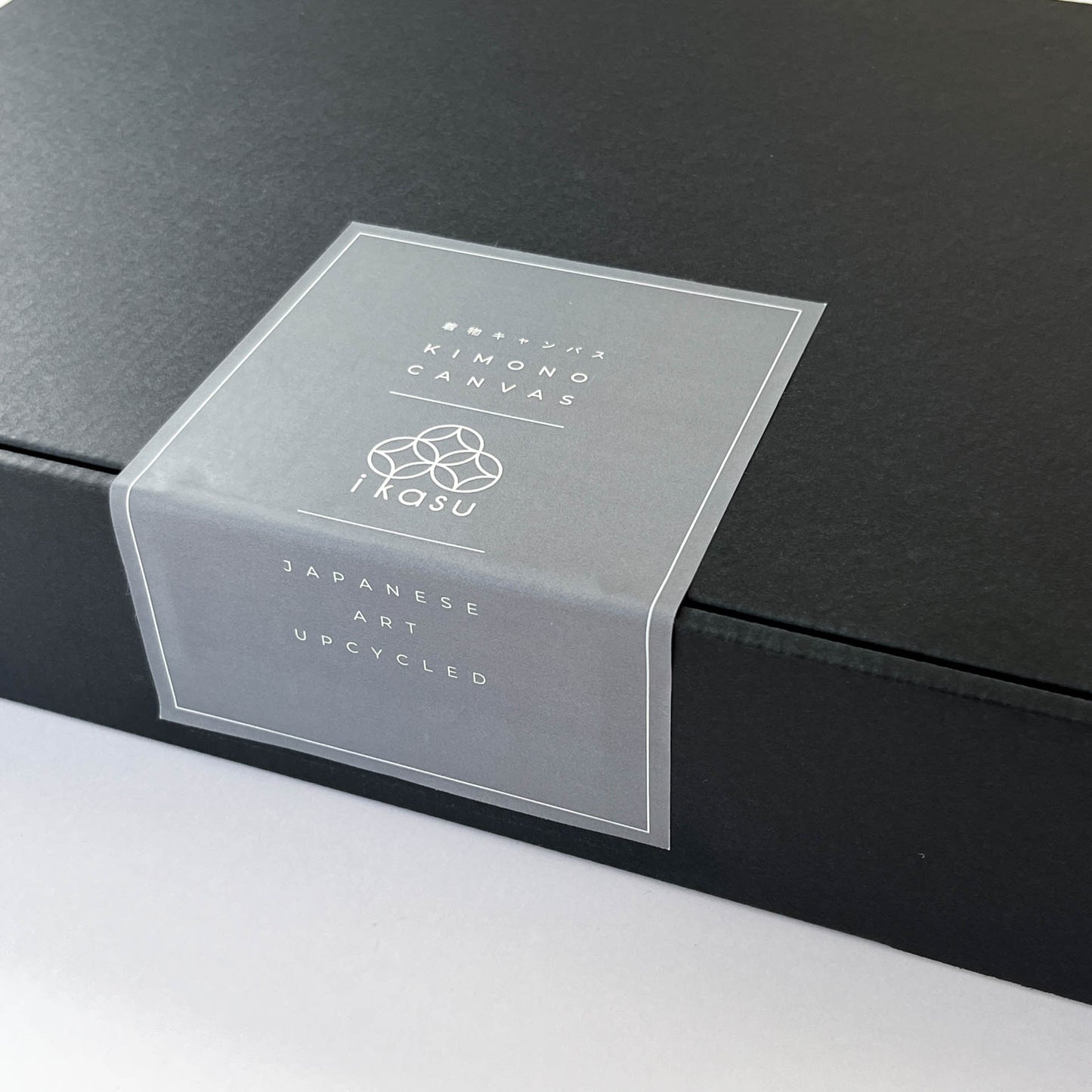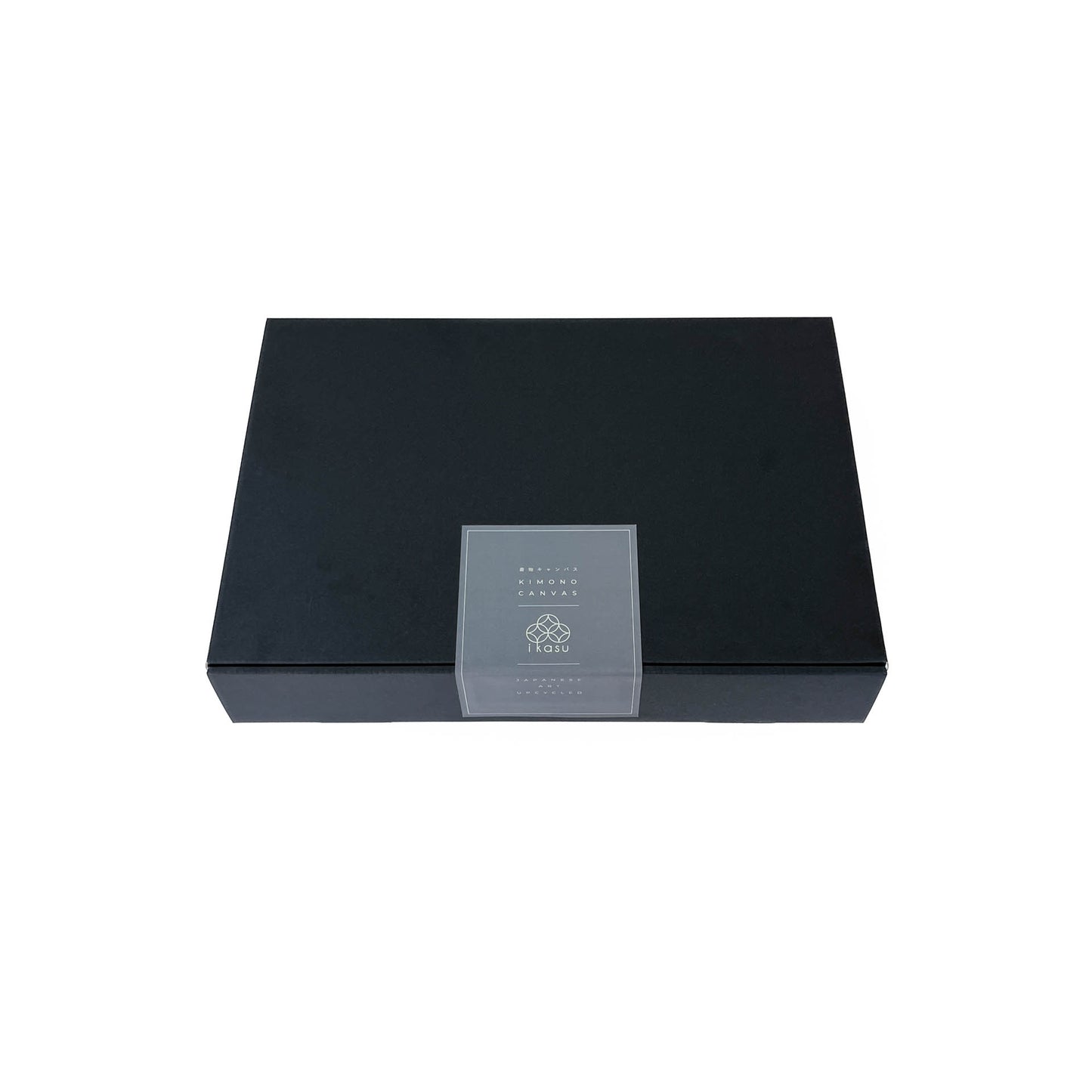Ocean of Pines (set of 2)
Ocean of Pines (set of 2)
Couldn't load pickup availability
Size
about 24cm x about 34cm x about 2cm x 2 items
Materials
wooden frame, cotton linen canvas (under-layer), pure silk (outside-layer), golden threads
About this canvas
The two canvases are crafted from different kimonos, linked by a common theme: the traditional "kasamatsu" pattern depicting pine trees in the shape of a hat. On the kimono canvas to the left, the pines are meticulously embroidered with gradation, portraying the color transition of tree branches as they prepare for autumn. The canvas on the right uses gold hand-painting and gold threads to capture the essence of the pattern.
Together, these canvases form a splendid combination of flowing forms, and they can be displayed together or separately, offering versatile options for your decor.
Period/Story
Both kimonos used in this canvas set were created and used during the late Showa period, likely spanning from the 1950s to the 1980s.
Explanation and meaning of pattern and colors
This canvas features a traditional pine pattern known as "Kasamatsu," which spreads gracefully over a wave pattern called "Nami-mon." The gradation of white and golden brown hues imparts a distinct autumnal feel. The striking contrast between the black and bluish-grey background adds to its visual appeal.
The "Kasamatsu" pattern is a quintessential representation of pine trees, and its name derives from the horizontal spread of the pine tree's leaves and branches, resembling a hat.
In East Asian culture, the pine tree symbolizes longevity due to its vibrant green leaves, which endure even in winter. In Japan, it's often referred to as the "evergreen tree" because its leaves stay green throughout the year, making it a symbol of good luck since ancient times. The pine tree has held a special place in Japanese culture as a sign of good fortune. The kadomatsu, a traditional pine tree decoration placed at the entrance of homes during New Year's, is a symbol of welcoming the gods.
Description of fabric characteristics
The pine tree pattern on the left canvas is elegantly highlighted with hand-dyed gold accents and "kinkoma" embroidery, a traditional Japanese embroidery technique.
Kinkoma embroidery involves wrapping thick gold threads around a wooden piece (a type of thread winder), which is then rolled, and the embroidery threads are meticulously laid along the underpainting and secured with a binding thread. The inclusion of gold threads adds a three-dimensional feeling to the artwork, enhancing the delicate nuances of the pattern and infusing a luxurious touch to the piece.
On the right canvas, the pattern is adorned with hand-dyed gold threads and traditional plump Japanese embroidery. While some of the embroidery threads have faded in color over time due to aging, this subtle change harmoniously blends with the color gradation, contributing to a sense of seasonal transition in the artwork.
Decoration Advice
The canvas can be displayed on a table, wall, etc. You will need tacks or nails to hang it on the wall. Because it is light, you can hang it with two ordinary thumbtacks. You can also lean it against an easel. Perfect for redecorating your room, as a housewarming gift, as a present, or as a souvenir for your loved ones! The product will be carefully wrapped and sent, so it can be used as a gift on the go.
Precaution
All the works are made from real kimonos, antiques and vintages. For this reason, the fabric may have traces of long-term use and minor fabric damages. - In case there are any scratches or stains, we always add a photo of the area on the item page, so please check before purchasing. Regarding precaution, cancellation and refund policy, please refer to the refund policy in the footer section of the site for information.
The last pictures in the gallery are the pictures of the reverse side of the canvas, the attachments and the package.
